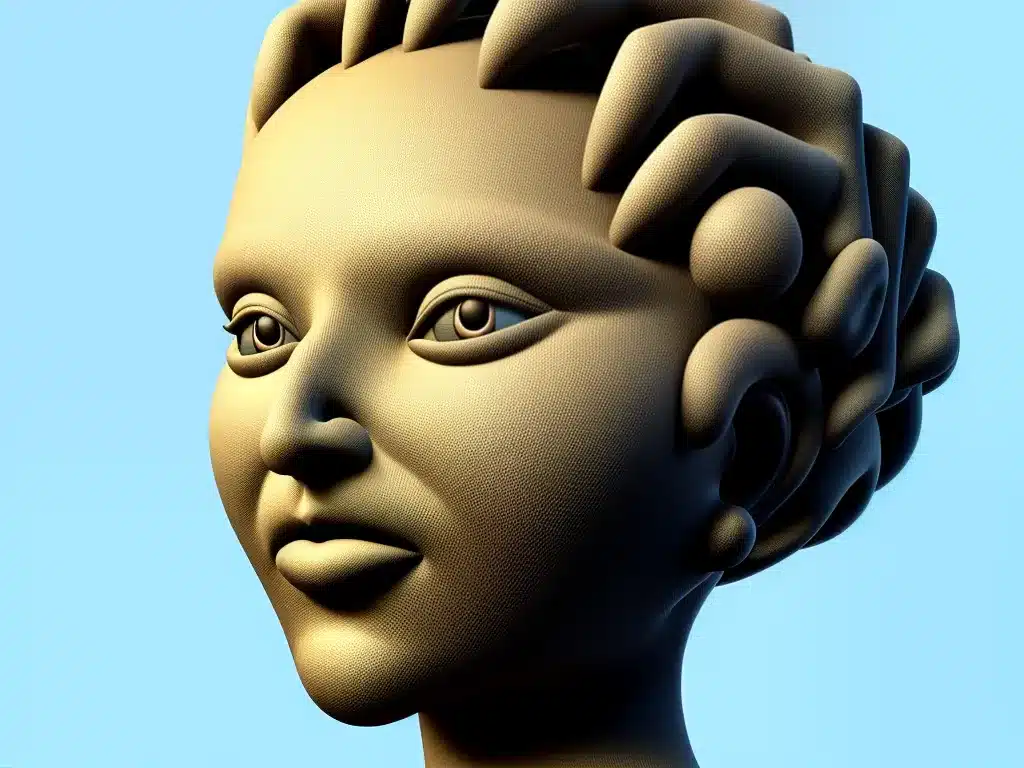
Introduction
The advent of AI image generators like DALL-E 2, Midjourney, and Stable Diffusion has sparked much debate around their impact on human creatives. These tools can quickly generate impressively detailed 3D artworks and scenes with simple text prompts. But is this technological leap a boon or bust for working 3D artists and designers? I aim to explore both sides of this debate in depth.
The Positives of AI Art Generation
Democratization of Creative Tools
Previously, creating quality 3D art required expensive software and years honing complex digital art skills. AI art generators democratize access to powerful creative tools. Now anyone can visualize concepts easily with text-to-image AI. This allows more people to engage in creative pursuits.
For hobbyists and students, these AIs offer an easy way to build skills and realize ideas without intensive training. Generative AI can assist professionals too. It enables rapid prototyping and concept iteration. Overall, AI art creation makes visualizing ideas more accessible.
Time Savings and Efficiency
Manually creating 3D art is enormously time consuming. Skilled 3D modelers, texture artists, and illustrators spend years perfecting their craft. With AI generators, visual concepts can be produced in seconds instead of hours or days. This represents huge time savings.
AI assistance also aids project efficiency. For instance, game developers can test many character designs quickly to finalize concepts. Architects might iterate building visualizations to zero in on the optimal design. The speed and flexibility of AI will allow creatives to work faster.
Creative Inspiration
While AI art provides fast mimicry of styles, the results can surprise and inspire. The accidental details, combinations, and abstractions of generated images push creativity in new directions.
Experimenting with AI art generation can boost one’s creative process. The unique images sparked by text prompts and image uploads can refresh mental vision. AI art exploration assists ideation and enables new creative perspectives.
The Dangers of Relying on AI Art
Deskilling Concerns
If creatives come to heavily rely on AI art generation, some skills may atrophy. Developing artistic techniques takes regular, deliberate practice over years. Outsourcing this effort to AI risks erosion of hard-won abilities.
Creative careers are competitive with applicants expected to showcase diverse technical skills. Overdependence on AI generation during education may limit mastery of traditional skills valued in the job market. Striking a balance is key for avoiding deskilling.
Limitations of AI Capabilities
While AI generators create superficially impressive images, they have clear creative limitations. The art lacks a human touch and often contains glitches requiring clean up. AI struggles to match the spatial reasoning, emotion, storytelling, and meaning that artists weave into their work.
For commercial art requiring original visions, consistency, and attention to detail, AI currently falls short. Flawed outputs amplify that these tools merely produce visual ideas. Expert artists remain irreplaceable for polished illustrations, animations, product designs and other final output.
Devaluing Artistic Skills
Some fear AI art could devalue human creatives’ skills if clients expect computer-generated art for cheap. Yet, businesses patronizing AI art over quality handmade art may get what they pay for.
AI art has its place, but should not replace skilled artists and designers. The public must be educated on its limitations so people continue appreciating and fairly compensating the uniquely human strengths of talented creatives.
Ways Forward in the AI Art Era
Setting Healthy Boundaries
As with any new technology, healthy boundaries will maximize benefits and minimize harm from generative AI. Artists should thoughtfully assess its value for different stages of their workflow rather than blindly outsourcing concepting.
Using AI art generation in moderation as inspiration while still regularly practicing core skills provides balance. People should also give proper attribution to tools used and respect intellectual property. Overall, a nuanced rather than absolutist stance will yield the most positive results.
Recognizing the Enduring Value of Human Creativity
While AI can accelerate idea generation, human creativity remains the wellspring of meaning, emotion and cultural value. We must sustain appreciation for highly skilled artists and designers whose years of honing their craft make them irreplaceable.
Audiences valuing connections and meaning have an essential role in continuing to elevate human-generated art. There will always be demand for the irreplicable talents of painters, animators, sculptors and other creators expressing the peak of human creativity.
Responsible AI Development
For AI art technology to responsibly empower rather than displace creators, its development should be shaped by diverse input. Rushing blindly ahead guided only by Silicon Valley technologists risks exacerbating lack of diversity in tech and neglecting key ethical considerations around AI.
Instead, AI should be co-designed with artists, ethicists, sociologists and other domain experts beyond data scientists alone. This inclusive approach is vital for steering the technology in an inspiring rather than dehumanizing direction.
Conclusion
AI image generation brings powerful opportunities to expand access to creative tools, inspire new ideas, and increase workflow efficiency. However, relying solely on its output risks deskilling and fails to replace human creativity’s unique sparks of meaning. With responsible development centering diverse voices and healthy individual boundaries, AI and human creativity can positively co-evolve, enriching our future.
The boons of democratized creation and enhanced workflows show this technology’s promise. But we must actively shape an AI art future respecting human talents and values. With wisdom, AI art generation can uplift rather than undermine human creatives’ indispensable contributions to society.












